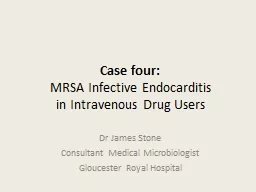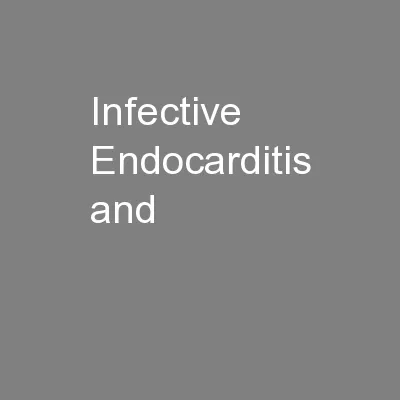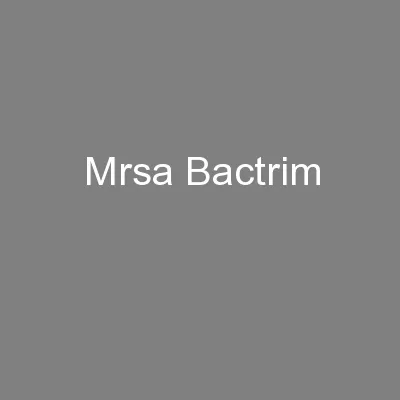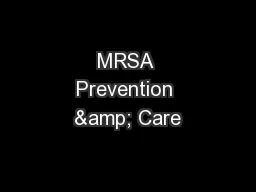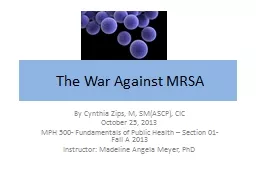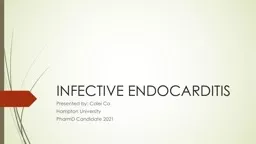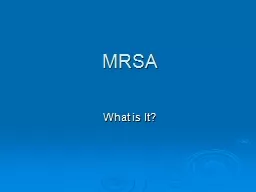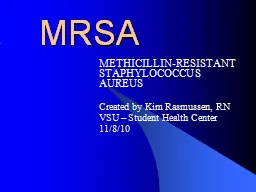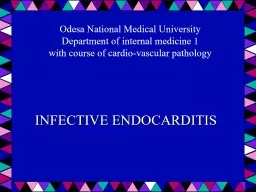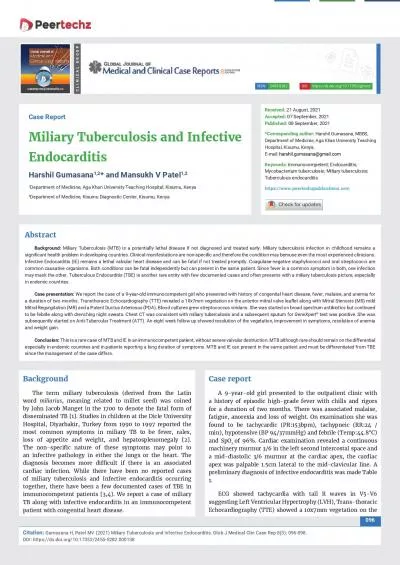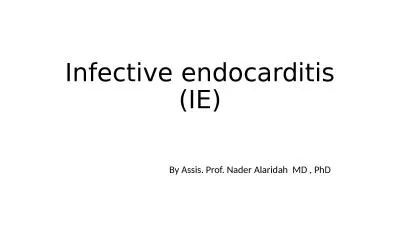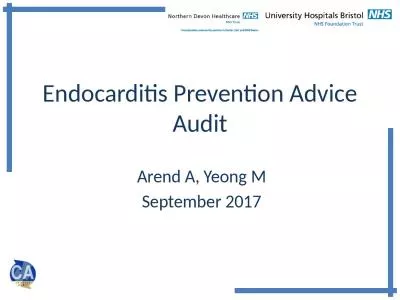PPT-Case four: MRSA Infective Endocarditis
Author : celsa-spraggs | Published Date : 2019-01-23
in Intravenous Drug Users Dr James Stone Consultant Medical Microbiologist Gloucester Royal Hospital BACKGROUND Three IVDU patients diagnosed with infective endocarditis
Presentation Embed Code
Download Presentation
Download Presentation The PPT/PDF document "Case four: MRSA Infective Endocarditis" is the property of its rightful owner. Permission is granted to download and print the materials on this website for personal, non-commercial use only, and to display it on your personal computer provided you do not modify the materials and that you retain all copyright notices contained in the materials. By downloading content from our website, you accept the terms of this agreement.
Case four: MRSA Infective Endocarditis: Transcript
Download Rules Of Document
"Case four: MRSA Infective Endocarditis"The content belongs to its owner. You may download and print it for personal use, without modification, and keep all copyright notices. By downloading, you agree to these terms.
Related Documents

